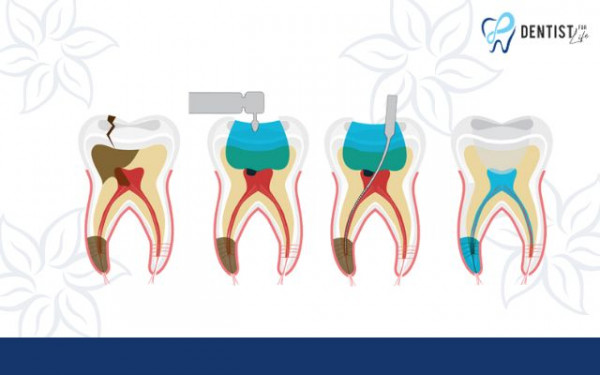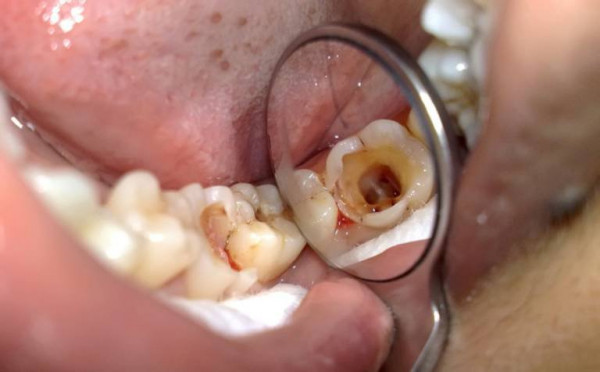When it comes to treating a damaged or infected tooth, there are two common procedures that dentists may recommend: pulpectomy and root canal. Both of these procedures involve removing the infected pulp from the inside of the tooth, but there are some differences between the two.
Pulpectomy vs. root canal
A pulpectomy involves the complete removal of pulp from both the crown and roots of a tooth, followed by filling the space with a material that the body can reabsorb. Typically, this procedure is conducted on baby teeth.
Contrarily, a root canal begins similarly with a pulpectomy but concludes differently for permanent teeth. After pulp removal, the entire root canal system undergoes cleaning, shaping, and eventual sealing. Unlike a pulpectomy, a root canal treatment necessitates multiple dental visits.
A pulpectomy can be completed in one appointment, typically involving these steps:
- X-rays are taken to examine surrounding infections and understand root canal shapes.
- A local anesthetic is administered to numb the area.
- A hole is drilled into the tooth, and small dental instruments remove the pulp.
- The tooth is cleaned, disinfected, and readied for filling.
- The tooth is filled with a resorbable material.
Conversely, a root canal treatment requires multiple visits. Following pulp removal, the root canal system undergoes thorough cleaning, shaping, and sealing. Patients often receive a temporary crown before returning for the permanent filling and crown placement.
See more: The Ultimate Guide to Understanding the Meaning of Root Canal
When is a pulpectomy needed?

Utilized to salvage a severely damaged baby tooth due to decay or injury, pulpectomy holds significance despite the perception of baby teeth being less critical. Valid reasons support this procedure.
A baby tooth’s preservation maintains space for the forthcoming permanent tooth. Premature loss of a baby tooth can result in challenges such as difficulty in chewing, speech development issues, and neighboring teeth shifting into the gap, impacting the alignment of permanent teeth. This shift may cause teeth to grow misaligned or overcrowded, making them challenging to clean.
Following a pulpectomy, the filling material used in the tooth is designed to be naturally reabsorbed by the body as the permanent tooth begins to emerge.
What is a partial pulpectomy?
A pulpectomy entails the complete removal of pulp from both the upper chamber and the roots of a tooth. Conversely, a partial pulpectomy involves the extraction of either the damaged portion of the pulp or solely the upper chamber’s pulp without affecting the roots.
Following the removal of damaged pulp, the tooth undergoes cleaning, disinfection, and subsequent filling. Known interchangeably as a pulpotomy or pulp therapy, a partial pulpectomy might serve as a viable option for less severe tooth damage.
See more: Exploring the Causes and Treatment of Dental Pulpitis
Can a pulpectomy be avoided?
A pulpectomy becomes necessary when tooth enamel suffers damage due to decay. To potentially prevent decay, consider these oral care practices:
- Brush your teeth (or your child’s teeth) at least twice daily.
- Opt for water during meals to rinse away sugars and acids.
- Substitute sugary beverages with water or milk.
- Ensure regular dental check-ups. Detecting decay early can mean the difference between a standard filling and requiring a pulpectomy.
- Reduce the risk of tooth injury during sports activities by wearing a mouth guard. Following any mouth injury, promptly visit the dentist for assessment and care.
Pulpectomy recovery

A pulpectomy becomes necessary when tooth enamel succumbs to decay. To potentially forestall decay, consider these oral care practices:
Brush teeth, or your child’s teeth, at least twice daily.
Choose water during meals to wash away sugars and acids.
Substitute sugary drinks with water or milk.
Ensure regular dental check-ups. Early detection of decay can mean the difference between a standard filling and needing a pulpectomy.
Mitigate the risk of tooth injury during sports by wearing a mouthguard. After any mouth injury, promptly seek assessment and care from the dentist.
Pulpectomy cost
The cost of a pulpectomy typically ranges between $80 and $300, but variations exist due to several factors. These include the specific tooth involved, the number of imaging tests required, your dental insurance coverage, co-pays, deductibles, and whether the procedure is performed by a dentist, pediatric dentist, or endodontist, in or out-of-network. If a permanent crown accompanies the root canal, the expenses will be notably higher. Your dentist can provide a pre-procedure estimate, and contacting your insurer beforehand can help determine coverage details. Apart from the procedure duration, it’s unlikely that you’ll need extra time off from school or work.
See more: What is periodontics? What is periodontitis? Cause and signs of identification
Reputable Root Canal Treatment Clinic:
If you need a reliable and reputable root canal treatment clinic, look no further. Our clinic specializes in providing high-quality root canal treatments performed by experienced and skilled professionals. We prioritize patient comfort and satisfaction, ensuring that you receive the best care possible.
Our team of experts utilizes the latest technology and techniques to ensure precise and effective root canal procedures. We understand the importance of a pain-free experience, and our clinic is equipped with state-of-the-art equipment to minimize any discomfort during the treatment process.
When you choose our clinic for your root canal treatment, you can have peace of mind knowing that you are in capable hands. We have a proven track record of successful treatments and many satisfied patients who have regained their oral health.
Don’t let dental issues hinder your daily life. Contact our reputable root canal treatment clinic today to schedule an appointment and get the care you deserve.



